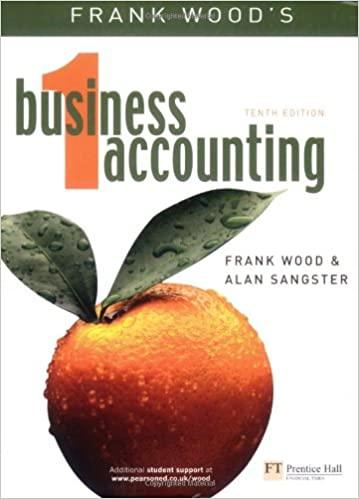
This question also asks you to reconsider the "doing-it-once environment, except that we now consider an activity that generates BOTH rewards and costs. Throughout, suppose that you value rewards and costs linearly, and that you have , & preferences with B = 0.7 and 8 = 1. Suppose there is an activity that you will complete on one of the next 5 days. As a function of when you do the activity, your reward will be v/ and your cost will be Ct, where (C1,C2,C3,C4,C5) = (45,45,45,62,87) and (V1, V2, V3, V4, V5) = (35,45,60,60,60). However, there are two possible cases for when you receive these payoffs: 2 Immediate costs: you incur the cost when you do it, and receive the reward in the future. Immediate rewards: you receive the reward when you do it, and incur the cost in the future. For instance, if you do the activity in period 4, your cost is c4 = 62 and your reward is v4 = 60. For immediate costs, the cost c4 = 62 is incurred in period 4 while the reward 14 = 60 is received sometime later. For immediate rewards, the reward V4 = 60 is received in period 4 while the cost c4 = 62 is incurred sometime later. Since we are assuming 8 = 1, exactly when later is irrelevant. (a) When is the best time to complete the task (given long-run preferences)? How does your answer depend on the timing of rewards and costs? (b) Consider the case of immediate costs. When do naifs complete the task, and when do so- phisticates complete the task? (c) Consider the case of immediate rewards. When do naifs complete the task, and when do sophisticates complete the task? This question also asks you to reconsider the "doing-it-once environment, except that we now consider an activity that generates BOTH rewards and costs. Throughout, suppose that you value rewards and costs linearly, and that you have , & preferences with B = 0.7 and 8 = 1. Suppose there is an activity that you will complete on one of the next 5 days. As a function of when you do the activity, your reward will be v/ and your cost will be Ct, where (C1,C2,C3,C4,C5) = (45,45,45,62,87) and (V1, V2, V3, V4, V5) = (35,45,60,60,60). However, there are two possible cases for when you receive these payoffs: 2 Immediate costs: you incur the cost when you do it, and receive the reward in the future. Immediate rewards: you receive the reward when you do it, and incur the cost in the future. For instance, if you do the activity in period 4, your cost is c4 = 62 and your reward is v4 = 60. For immediate costs, the cost c4 = 62 is incurred in period 4 while the reward 14 = 60 is received sometime later. For immediate rewards, the reward V4 = 60 is received in period 4 while the cost c4 = 62 is incurred sometime later. Since we are assuming 8 = 1, exactly when later is irrelevant. (a) When is the best time to complete the task (given long-run preferences)? How does your answer depend on the timing of rewards and costs? (b) Consider the case of immediate costs. When do naifs complete the task, and when do so- phisticates complete the task? (c) Consider the case of immediate rewards. When do naifs complete the task, and when do sophisticates complete the task







